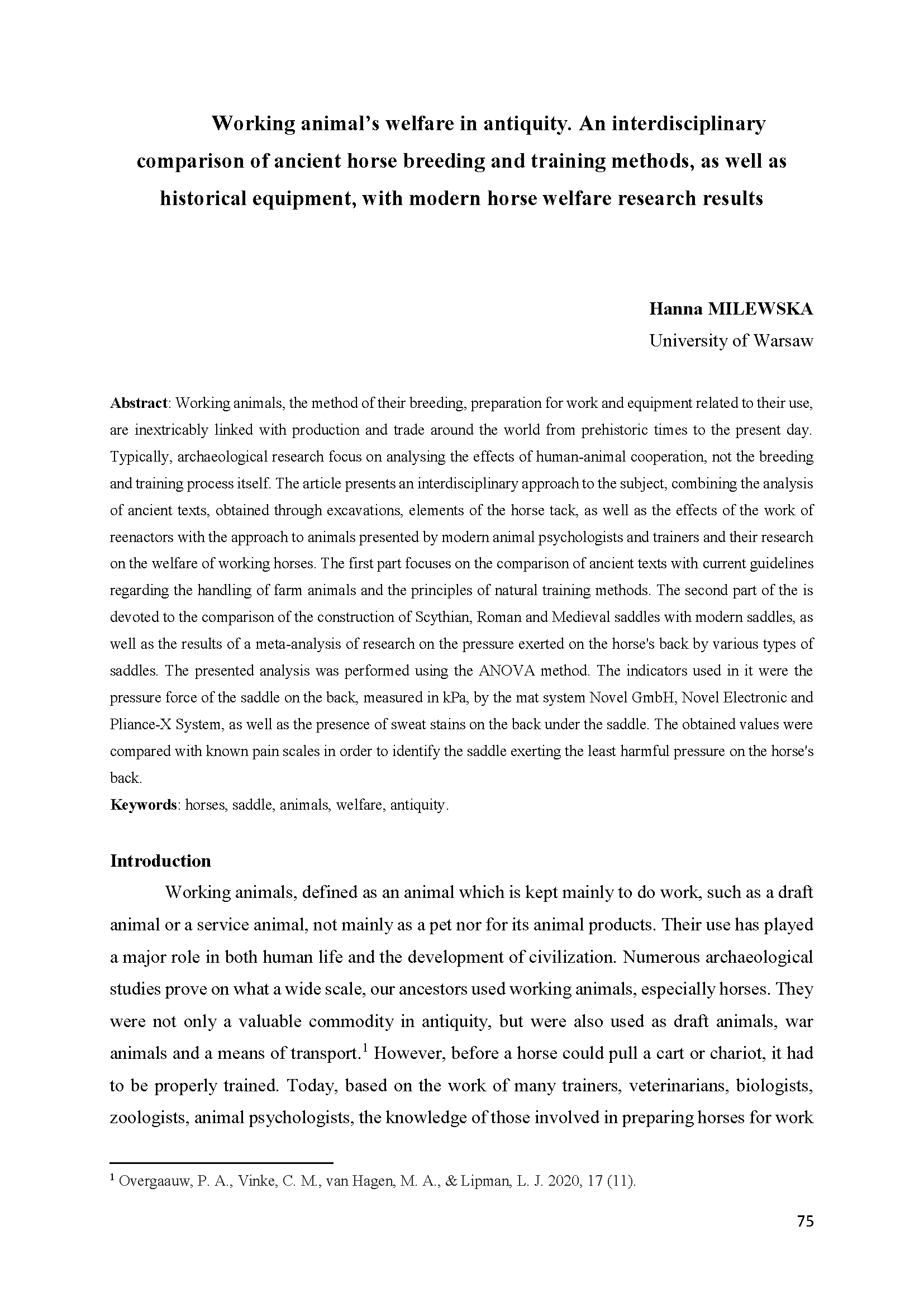Working animal’s welfare in antiquity. An interdisciplinary comparison of ancient horse breeding and training methods, as well as historical equipment, with modern horse welfare research results
DOI:
https://doi.org/10.31178/cicsa.2023.9.6Keywords:
horses, saddle, animals, welfare, antiquityAbstract
Working animals, the method of their breeding, preparation for work and equipment related to their use, are inextricably linked with production and trade around the world from prehistoric times to the present day. Typically, archaeological research focus on analysing the effects of human-animal cooperation, not the breeding and training process itself. The article presents an interdisciplinary approach to the subject, combining the analysis of ancient texts, obtained through excavations, elements of the horse tack, as well as the effects of the work of reenactors with the approach to animals presented by modern animal psychologists and trainers and their research on the welfare of working horses. The first part focuses on the comparison of ancient texts with current guidelines regarding the handling of farm animals and the principles of natural training methods. The second part of the is devoted to the comparison of the construction of Scythian, Roman and Medieval saddles with modern saddles, as well as the results of a meta-analysis of research on the pressure exerted on the horse's back by various types of saddles. The presented analysis was performed using the ANOVA method. The indicators used in it were the pressure force of the saddle on the back, measured in kPa, by the mat system Novel GmbH, Novel Electronic and Pliance-X System, as well as the presence of sweat stains on the back under the saddle. The obtained values were compared with known pain scales in order to identify the saddle exerting the least harmful pressure on the horse's back.




